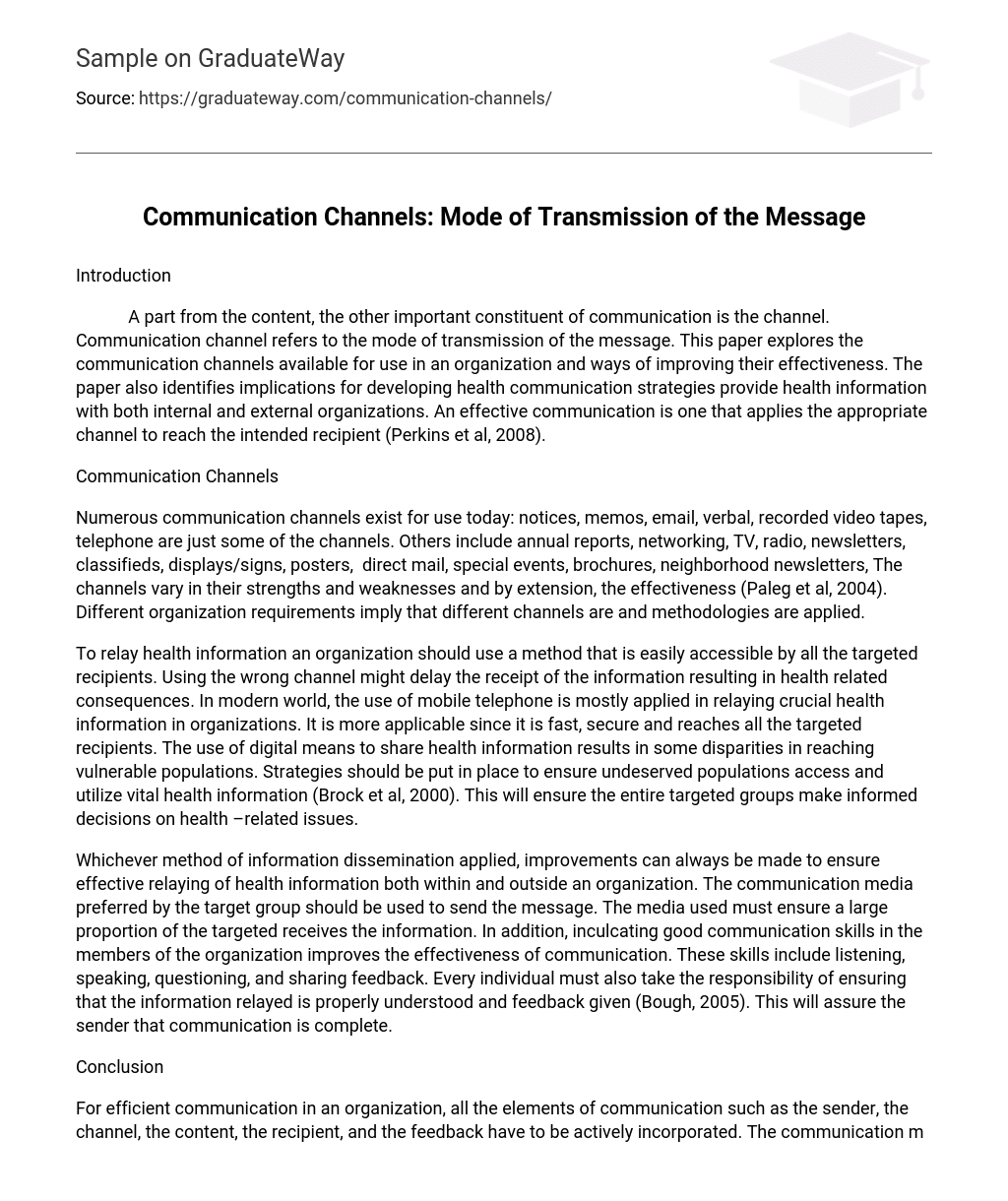Introduction
A part from the content, the other important constituent of communication is the channel. Communication channel refers to the mode of transmission of the message. This paper explores the communication channels available for use in an organization and ways of improving their effectiveness. The paper also identifies implications for developing health communication strategies provide health information with both internal and external organizations. An effective communication is one that applies the appropriate channel to reach the intended recipient (Perkins et al, 2008).
Communication Channels
Numerous communication channels exist for use today: notices, memos, email, verbal, recorded video tapes, telephone are just some of the channels. Others include annual reports, networking, TV, radio, newsletters, classifieds, displays/signs, posters, direct mail, special events, brochures, neighborhood newsletters, The channels vary in their strengths and weaknesses and by extension, the effectiveness (Paleg et al, 2004). Different organization requirements imply that different channels are and methodologies are applied.
To relay health information an organization should use a method that is easily accessible by all the targeted recipients. Using the wrong channel might delay the receipt of the information resulting in health related consequences. In modern world, the use of mobile telephone is mostly applied in relaying crucial health information in organizations. It is more applicable since it is fast, secure and reaches all the targeted recipients. The use of digital means to share health information results in some disparities in reaching vulnerable populations. Strategies should be put in place to ensure undeserved populations access and utilize vital health information (Brock et al, 2000). This will ensure the entire targeted groups make informed decisions on health –related issues.
Whichever method of information dissemination applied, improvements can always be made to ensure effective relaying of health information both within and outside an organization. The communication media preferred by the target group should be used to send the message. The media used must ensure a large proportion of the targeted receives the information. In addition, inculcating good communication skills in the members of the organization improves the effectiveness of communication. These skills include listening, speaking, questioning, and sharing feedback. Every individual must also take the responsibility of ensuring that the information relayed is properly understood and feedback given (Bough, 2005). This will assure the sender that communication is complete.
Conclusion
For efficient communication in an organization, all the elements of communication such as the sender, the channel, the content, the recipient, and the feedback have to be actively incorporated. The communication must not only be clear, it should also be accessible, fast, and should be framed in a manner that prompts the recipient to respond appropriately.
References
Allen, J., & Brock, S. A. (2000) Health care communication using personality type: Patients are different. Routledge.
Bough, B. (2005). 101 ways to improve your communication skills instantly. Goal Minds, Inc.
Martha, D., & Paleg. K. (2004). The messages workbook: Powerful strategies for effective communication at work and home .New Harbinger Publications.
Perkins, P. S., & Les, B. (2008). The art and science of communication: Tools for effective communication in the workplace. Wiley.





